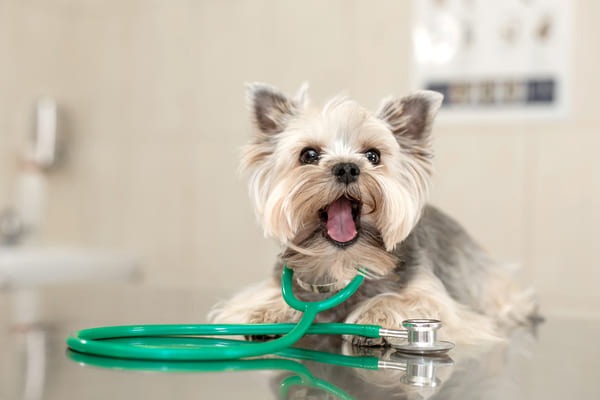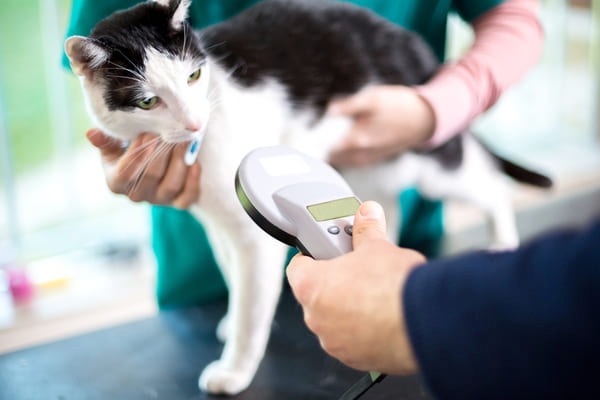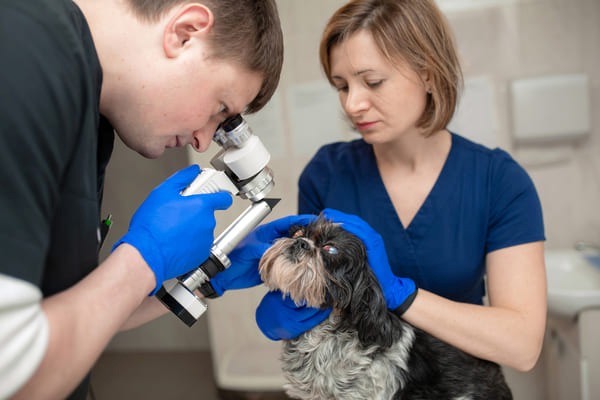

 Back
Back
New Trends That Will Shape Veterinary Medicine in 2023
Veterinary medicine is projected to make significant progress by 2023. With the emergence of new tech and treatments, the field is responding by exploring creative ways to enhance animal healthcare.

Writer Animalia Team

The field of veterinary medicine is expected to make tremendous advancements by 2023. As the industry continues to become a larger part of animal healthcare due to the development of advanced technologies and treatments, the veterinary profession is responding by finding new and innovative ways to expand animal care capabilities.
Read on for the trending issues and advancements seen in veterinary medicine today and the ones expected tomorrow.
Technology becomes more accessible and affordable
One area where veterinary medicine is expected to change significantly by 2023 is the use of technology. As technology becomes more accessible and affordable, many veterinary clinics are beginning to embrace the use of advanced diagnostics, treatments, and surgeries. This includes utilizing robotic and computer-assisted surgical tools, special imaging systems, and even artificial intelligence for pet diagnostics. These advances allow veterinarians to monitor animal behavior better, diagnose problems earlier (even the ones that are rare, chronic, or difficult –to- diagnose), and develop more accurate treatments.

Understanding the genetic makeup of animals better
Advances in genetics and genomics have enabled veterinarians to understand the genetic makeup of animals better which in turn aids in and treating diseases differently. The use of genetic testing in animals is becoming more common. It analyzes a pet’s genes to identify defective traits or potential health risks. This can help owners and vets better predict and prepare for any potential health problems that may occur in the future. With this technology, it is also possible to detect any inherited diseases or disorders, allowing vets to provide proper preventative care to their patients.
Discovering new treatment options
Dr. Paula Simons, emergency and critical care veterinary resident, shared with us some exciting news about new treatment options: “One of the most exciting research projects currently underway is focused on investigating treatment options for Feline Infectious Peritonitis. This disease has historically been considered fatal without viable treatment options. The anti-viral GS-441524 is showing promise and is expected to be an excellent treatment option for cats with FIP.”

Another new treatment focuses on what Dr. Simons describes as immune-mediated diseases: “These diseases are becoming more and more commonly recognized in our canine companions. Many of these diseases are life-threatening and can carry a guarded prognosis. Most animals will be treated with immunosuppressive medications, but therapeutic plasma exchange (TPE) is a promising alternative therapy. This is especially true for animals with immune-mediated hemolytic anemia or myasthenia gravis. TPE is a procedure that filters out the patient’s plasma (containing autoimmune cells) and replaces it with that of a donor thereby removing the cells that are attacking the body. “
Expanding the use of AI technology
Animal diagnosis has never been an easy thing. Thankfully, the use of AI gradually integrated into veterinary medicine and brought benefits to the industry. AI applications help to improve accuracy and efficiency when detecting animals’ diseases and providing treatments. Our pets can’t talk, which makes it difficult for doctors to diagnose their health conditions. Fortunately, the AI application used in veterinary medicine can help doctors correctly identify more intractable diseases for animals.
In addition to detecting rare diseases, AI applications in veterinary medicine can also help vets to predict animals’ health conditions and the risk of getting potential diseases in the following years to provide proactive care.
Another way AI benefits veterinary medicine is by providing a better interpretation of medical images, such as radiology results. AI-based software can take over the simple and tedious work of veterinary radiologists, such as analyzing data, collecting information, and classifying cases. More importantly, it can provide suggestions to prioritize serious cases based on its interpretation of medical images
Utilizing precision robotics
By utilizing precision robotics, veterinarians can perform various procedures with better accuracy and fewer complications. For example, the da Vinci Surgical System is a robotic system used to perform delicate and complex surgeries with the utmost accuracy and precision. It is also much less painful than traditional surgeries, as the da Vinci system has a smaller incision and requires much less anesthesia than regular surgeries.
Treating chronic diseases more effectively
Veterinary medicine also sees advancements in treatments for chronic illnesses and conditions. Treatments such as stem cell therapy and platelet-rich plasma therapy (PRP) have been used to treat joint conditions and arthritis more effectively. Stem cell therapy works by replacing cells in the body which have been damaged or destroyed by a chronic condition. In contrast, PRP therapy works by promoting blood flow to the area of damage and aiding in the healing process.

The use of nanotechnology
Nanotechnology is a field of science that manipulates matter on a very small scale, typically measured in nanometers. Its use in veterinary medicine could potentially revolutionize treatments for animals, allowing for much more precise delivery of therapies to the areas of the body that require them. Nanotechnology may make it possible to create microscopic devices that can be inserted into the body to target specific cells and treat disease from the inside out.
Using sophisticated and miniaturized medical devices
Another exciting advancement is the development of sophisticated, miniaturized medical devices designed specifically for animals. Miniaturized medical devices are much smaller than traditional medical tools and can be used for a variety of purposes, such as diagnostics, monitoring, and therapy. With the help of miniaturized devices, veterinarians can obtain better information about their animal patients’ health, monitor their treatments’ progress, and even provide therapies such as vaccinations or drugs.
These are just a few of the trends that vets think will shape veterinary medicine in 2023. 2022 has been an exciting year, and we all look forward to what is ahead of us. One thing is for sure- with all of the advances we’re expecting, costs will continue to challenge our clients. Pet insurance may fill that gap.





We offer the most comprehensive coverage
out there
Having Animalia is like a top-of-the-line
Rolls-Royce with a swimming
pool in the trunk.



Get your pet insurance quote
Is your pet a...
- Dog
- Cat
What is your pet's name?
Zip code




